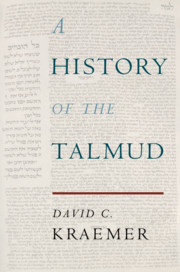Book contents
- A History of the Talmud
- A History of the Talmud
- Copyright page
- Contents
- Preface
- Glossary
- Timeline
- Chapter 1 Introduction
- Chapter 2 Before the Rabbis
- Chapter 3 The Emergence of the Mishnah
- Chapter 4 What Is the Mishnah?
- Chapter 5 The Reception of the Mishnah
- Chapter 6 The First Talmud
- Chapter 7 Jews in Babylonia and the Emergence of the Babylonian Talmud (the Bavli)
- Chapter 8 What Is the Bavli?
- Chapter 9 The Reception of the Bavli
- Chapter 10 The Talmud in Early Modernity
- Chapter 11 The Talmud in Modernity and Beyond
- References
- Index
Chapter 4 - What Is the Mishnah?
Published online by Cambridge University Press: 18 July 2019
- A History of the Talmud
- A History of the Talmud
- Copyright page
- Contents
- Preface
- Glossary
- Timeline
- Chapter 1 Introduction
- Chapter 2 Before the Rabbis
- Chapter 3 The Emergence of the Mishnah
- Chapter 4 What Is the Mishnah?
- Chapter 5 The Reception of the Mishnah
- Chapter 6 The First Talmud
- Chapter 7 Jews in Babylonia and the Emergence of the Babylonian Talmud (the Bavli)
- Chapter 8 What Is the Bavli?
- Chapter 9 The Reception of the Bavli
- Chapter 10 The Talmud in Early Modernity
- Chapter 11 The Talmud in Modernity and Beyond
- References
- Index
Summary
In this chapter, we seek to understand the Mishnah and its meanings in its final form. We consider the shape of the Mishnah, the subjects it does and does not include, the qualities of its language and rhetoric, its relationship to canonical scripture and other parts of the pre-rabbinic tradition, and so forth. Crucially, we analyze a variety of key examples of the Mishnah to gain a genuine sense of its approaches. With an eye toward these considerations, we review the range of characterizations that have been offered for the Mishnah. We consider the theories of modern scholars who have made claims for the meaning of the Mishnah in its late antique Palestinian context and suggest some refinements of our own. In the end, we emerge with an appreciation of both the Mishnah’s rhetoric of tradition, on the one hand, and its bona fide radical qualities, on the other. Having characterized the Mishnah, to the best of our abilities, we then consider the question of when the Mishnah came to the precise shape we know, and ask about its realm of authority, whether among the rabbis or beyond.
Keywords
- Type
- Chapter
- Information
- A History of the Talmud , pp. 58 - 81Publisher: Cambridge University PressPrint publication year: 2019

